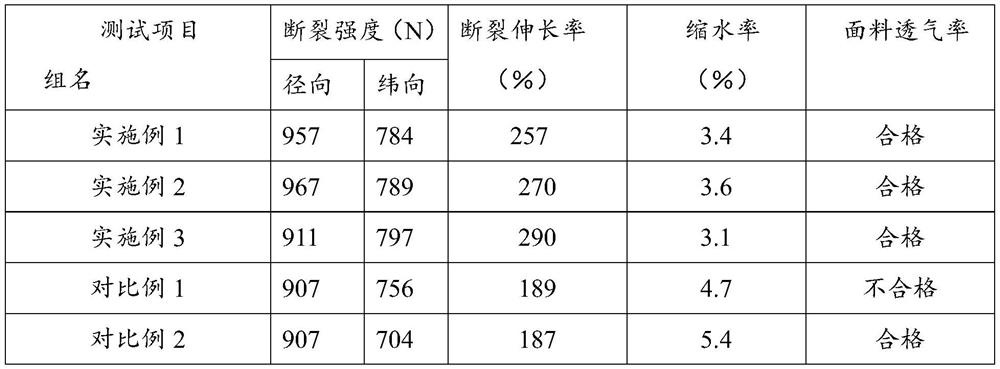Manufacturing method of modal fabric blended with regenerated cotton fibers
A production method and technology of regenerated cotton are applied in the field of modal fabric production, which can solve the problems of difficult disposal of defective products and high cost
- Summary
- Abstract
- Description
- Claims
- Application Information
AI Technical Summary
Problems solved by technology
Method used
Image
Examples
Embodiment 1
[0024] S1, processing of regenerated cotton: push and clean the regenerated cotton, use a carding machine to open, card and remove impurities, then carry out pre-drawing and sliver-winding combined machine processing in sequence, and then combed cotton processing, Produce regenerated cotton fiber strips;
[0025] S2, weaving of weft: the regenerated cotton fiber slivers prepared in S1, organic cotton fibers and modal fibers are drawn in three ways according to the mass ratio of 3:10:7, first spun into roving and then spun into spun yarn, and then Meridian bobbins are twisted together to make weft threads;
[0026] S3, warp weaving: blending modal fiber with fine yarn or sizing and then performing compact spinning to obtain warp:
[0027] S4, warping process: the warp and weft obtained in step S2 and step S3 are configured with tension using the front, middle and rear segmentation method, wherein the edge tension is 4g more than that of the front area, and several bobbins are ...
Embodiment 2
[0036] S1, processing of regenerated cotton: push and clean the regenerated cotton, use a carding machine to open, card and remove impurities, then carry out pre-drawing and sliver-winding combined machine processing in sequence, and then combed cotton processing, Produce regenerated cotton fiber strips;
[0037] S2, weaving of weft: the regenerated cotton fiber slivers prepared in S1, organic cotton fibers and modal fibers are drawn in three ways according to the mass ratio of 2:9:9, first spun into roving and then spun into spun yarn, and then Meridian bobbins are twisted together to make weft threads;
[0038] S3, warp weaving: blending modal fiber with fine yarn or sizing and then performing compact spinning to obtain warp:
[0039] S4, warping process: the warp and weft obtained in step S2 and step S3 are configured with tension using the front, middle and rear segmentation method, wherein the edge tension is 4g more than that of the front area, and several bobbins are o...
Embodiment 3
[0048] S1, processing of regenerated cotton: push and clean the regenerated cotton, use a carding machine to open, card and remove impurities, then carry out pre-drawing and sliver-winding combined machine processing in sequence, and then combed cotton processing, Produce regenerated cotton fiber strips;
[0049] S2, weaving of weft: the regenerated cotton fiber slivers prepared in S1, organic cotton fibers and modal fibers are drawn in three ways according to the mass ratio of 1:10:8, first spun into roving and then spun into spun yarn, and then Meridian bobbins are twisted together to make weft threads;
[0050] S3, warp weaving: blending modal fiber with fine yarn or sizing and then performing compact spinning to obtain warp:
[0051] S4, warping process: the warp and weft obtained in step S2 and step S3 are configured with tension using the front, middle and rear segmentation method, wherein the edge tension is 4g more than that of the front area, and several bobbins are ...
PUM
| Property | Measurement | Unit |
|---|---|---|
| Gram weight | aaaaa | aaaaa |
Abstract
Description
Claims
Application Information
 Login to view more
Login to view more - R&D Engineer
- R&D Manager
- IP Professional
- Industry Leading Data Capabilities
- Powerful AI technology
- Patent DNA Extraction
Browse by: Latest US Patents, China's latest patents, Technical Efficacy Thesaurus, Application Domain, Technology Topic.
© 2024 PatSnap. All rights reserved.Legal|Privacy policy|Modern Slavery Act Transparency Statement|Sitemap



